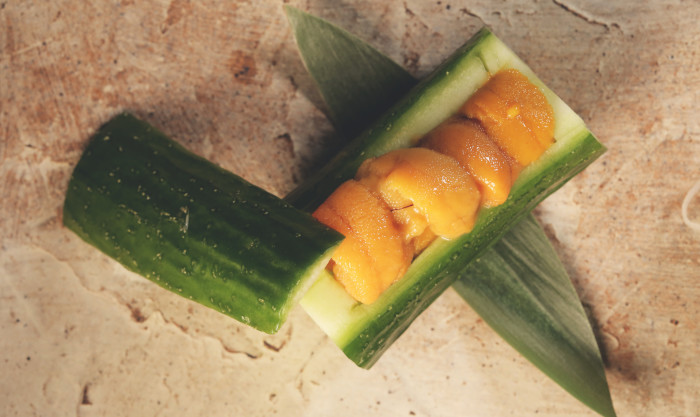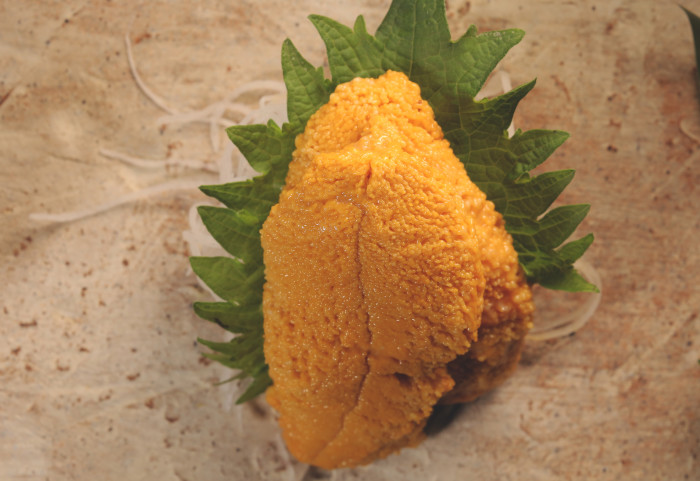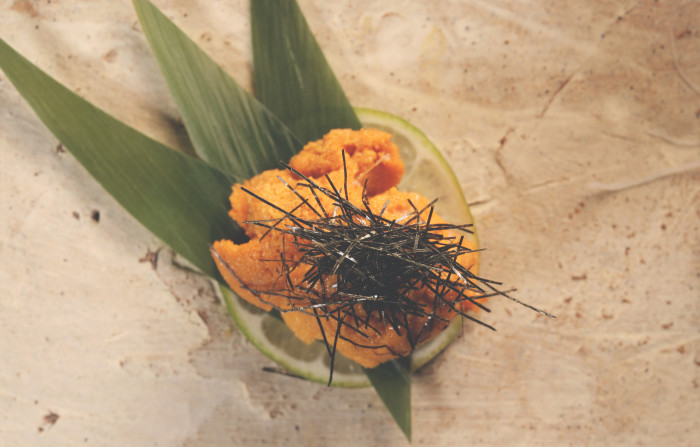What Are The Different Types Of Sea Urchin?
If you've had the good fortune of eating sea urchin (uni), you know that there's nothing that tastes quite like it. It's buttery and eggy, and some claim to pick up hints of the ocean between bites. With all that being said, there really isn't one single item that can be accurately compared to the spiny sea creature. Lobster? Fish roe? Maybe. But there's still something about the creamy orange-yellow delicacy that separates it from the rest.
In the United States, uni is most frequently served at Japanese establishments. While novices might voice a general like or dislike regarding their experiences with sea urchin, those in the know are aware that taste, texture and color can vary widely, depending primarily on where the uni was harvested. We surveyed four of New York City's top sushi chefs in hopes of getting some answers. What we found is that any sea urchin you come across in U.S. restaurants is likely to come from one of four global regions.
Broken down in their simplest form, these regions are Japan, the Northeast and the west coasts of the U.S. and South America. Here's what we learned about their differences.
Hokkaido, Japan
The majority of sea urchin sourced from Japan come from Hokkaido, the country's largest and northernmost prefecture. Chef Masaki Saito of NYC's omakase-only mecca Sushi Ginza Onodera believes that these are simply "the best," as they are "rich, deep and have an elegant sweetness." Saito points out their high content of umami, which is a result of the high-quality kelp in the area. After all, sea urchin eat kelp, so the quality of kelp directly affects the quality of the sea urchin.
Santa Barbara, California
Chef Saito is quick to label sea urchin from Santa Barbara as Hokkaido's main competition in terms of overall quality. He says that the uni here is much larger in size than that found in Japan, most likely due to high levels of sulfur in the surrounding sea ("Sulfur makes everything larger," he says). "They are not bad at all — they melt away and are very sweet," he comments, noting that its seaweed-based diet is vastly different from the one available in Japan. Chef Isao Yamada of the city's Japanese establishment Brushstroke claims that Santa Barbara uni is his favorite to use. "It's rich, thick and creamy," he asserts. "[Santa Barbara uni] is creamier than uni from Hokkaido."
Maine, United States
Many sushi restaurants on the East Coast will use sea urchin from Maine, mainly due to its proximity. Chef Yamada comments that sea urchin from this region is "firmer than others," namely Japanese and Californian uni. He also believes that Maine urchin gives off the strongest aroma of the sea. Chef Yoshi Kousaka of NYC's omakase-only joint Kosaka claims that Maine uni is a perfect example of his theory: "It takes at least ten years for a sea urchin to become stable and good [based on kelp conditions]." Just one decade ago, he maintains, Maine sea urchin would not be in the same conversation as the types listed above. Chef Etsuzo Nagao of Long Island City's Sushi Daizen states that Maine uni is typically brighter yellow in color, compared to Santa Barbara's darker orange. They're also distinctly different species, with the latter having much longer spikes on its exterior.
South America
If there's one thing that all four chefs we spoke to can agree on, it's that South American sea urchin (most commonly sourced from Chile) has yet to reach the levels of quality found in Japan or the U.S. Chefs Nagao and Kousaka do not serve it in their restaurants, believing that it is not quite "sushi grade," though you'll still see it plated at plenty of sushi restaurants across the country. Kousaka uses his same ten-year example to explain why the continent's offerings have yet to get up to par, while Chef Yamada has his own theory: "Since South America is hot and far, they have to add aluminum to the water to transport it to other regions, which affects the flavor." He hypothesizes that the sea urchin itself probably is not bad, but that he cannot judge due to the negative impact of the aluminum. While it all depends on the individual piece, uni from northern Chile is the brightest yellow — almost a lemon yellow — of all these options.




